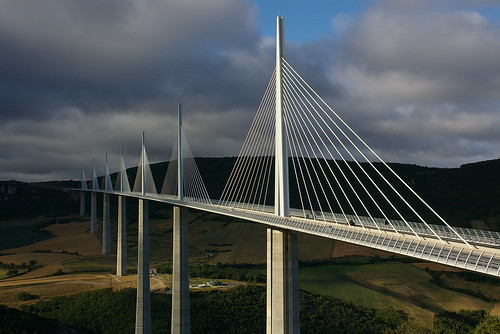
ESPAÑOL
Cliente: Autoridades Francesas
Arquitecto: Foster + Partners
Ingeniero: Michel Virlogeux
Longitud total: 2460 metros
Ancho: 32 metros
Tipo de puente: Atirantado
Salvando el río Tarn a una vertiginosa altura, el Viaducto de Millau se encargaría a Norman Foster para mejorar las comunicaciones en las inmediaciones cercanas al pueblo de Millau, en Aveyron, Francia. La enorme estructura, que combina como materiales el hormigón armado y el acero, cuenta con un ancho de 32 metros para ofrecer un servicio de dos carriles para cada sentido de tráfico rodado. El sustento del largo tablero de más de dos kilómetros de longitud, lo conforman siete pilares enormes rellenos de 85.000 m³ de hormigón armado. Son por tanto 205.000 toneladas de peso las que posee este fascinante puente atirantado que se ha convertido en un auténtico icono para Francia.

El pilar número dos (P2), consiguió el récord del mundo, ya que se sitúa a una altura de 244.96 metros, haciendo de este importante puente el más alto del mundo en la actualidad. En la parte superior de cada uno de los siete pilares se dejó un hueco en forma de v para aligerar el mismo. La estructura de terminación superior, que a modo de rombo gracias a las pilastras superiores, hace que las cargas se transmitan a la cimentación del viaducto aportando estabilidad al tablero. En la terminación con forma de v se apoyan las siete pilastras superiores que evocan claramente a la figura humana. El proceso de construcción fue bastante inusual, ya que después de construirse los enormes pilares de hormigón armado, se iban deslizando hacia el núcleo central las diferentes secciones que componen el tablero.

Cada uno de los siete pilares se encuentran separados entre sí por una distancia de 342 metros. Estos siete pilares junto con los tirantes de acero, logran sustentar el largo tablero de 2460 metros de longitud total. Con la construcción de este colosal viaducto emplazado en las inmediaciones del pueblo de Millau, las autoridades francesas esperan que pueda tener una vida útil de al menos 120 años. El puente más alto del mundo tuvo un coste total de 400 millones de euros, y sin lugar a dudas, no sólo ha ayudado a mejorar el tráfico en las inmediaciones de Millau, sino que además, se ha convertido en todo un símbolo para Francia.
El texto de este artículo se incluye en mi libro titulado "CONSTRUCCIONES FAMOSAS" / The text of this item is included in my book title "FAMOUS CONSTRUCTIONS" Español - English
by José Miguel Hernández Hernández
Publisher, Writer and Architectural Photographer
http://www.jmhdezhdez.com/
Video promotional
ENGLISH
Client: French Authorities
Architect: Foster + Partners
Engineer: Michel Virlogeux
Overall length: 2460 meters
Width: 32 meters
Type of bridge: cable-stayed
Saving the River Tarn at a dizzying height, the Millau Viaduct Norman Foster is responsible for improving communications in the vicinity near the town of Millau in Aveyron, France. The huge structure, and material that combines reinforced concrete and steel, has a width of 32 meters to offer a two-lane for each direction of traffic. The support of the long board over two kilometers long, is made up of seven huge pillars filled with 85,000 m³ of reinforced concrete. Are therefore 205,000 tonnes of weight which has this amazing suspension bridge that has become a true icon for France.
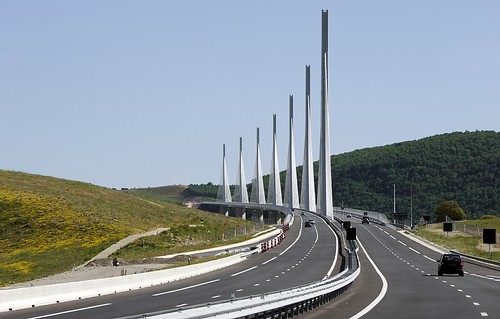
The pillar number two (P2), got the world record, because it lies at a height of 244.96 meters, making it important to bridge the highest in the world today. At the top of each of the seven pillars left a v-shaped hollow to lighten it. The upper end structure, which, like a diamond through the pillars above, makes loads transmitted to the foundation of the viaduct bringing stability to the board. On completion of v-shaped support over the seven pillars that clearly evoke the human figure. The construction process was quite unusual in that after constructing the massive concrete pillars, they were sliding towards the core of the different sections that make up the board.
Each of the seven pillars are separated by a distance of 342 meters. These seven pillars with steel braces, manage to sustain the long board from 2460 meters in total length. With the construction of this colossal viaduct located near the town of Millau, the French authorities expect to have a life expectancy of at least 120 years. The highest bridge in the world had a total cost of 400 million euros, without doubt, not only helped improve traffic near Millau, but also has become a symbol for France.
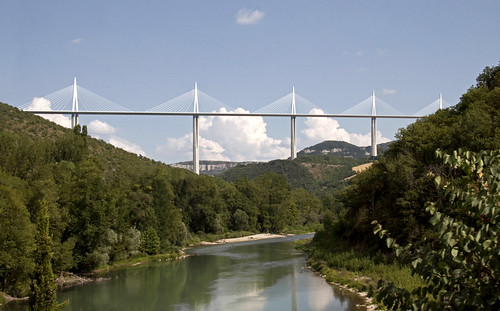
"Images Viaduct Millau, Aveyron, France"
Image 1 Copyright © Salvador Busquets, Image
Image 2 Copyright © Quim Bahí i Teixidor, Photostream
Image 3 Copyright © Laurent Jégou, Photostream
Images 4-5-6 Copyright © Dr. Tony Davies, Photostream
Image 7 Copyright © Tony Hisgett, Photostream
"Text" Copyright © José Miguel Hernández Hernández
Editor, Escritor y Fotógrafo de Arquitectura /
Publisher, Writer and Architectural Photographer
Todos los derechos reservados / All rights reserved
http://www.jmhdezhdez.com/
Related articles / Artículos relacionados
30 St. Mary Axe
London, United Kingdom
City Hall
London, United Kingdom
Hearst Tower
Manhattan, New York, USA
Millenium Bridge
London, United Kingdom
Canary Wharf Underground Station
London, United Kingdom
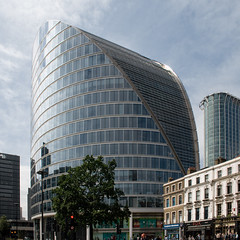
Moor House
London, United Kingdom
Others Cable-Stayed Bridge / Otros Puentes Atirantados
Harilaos Trikoupis Bridge
Athens, Greece
B. Mikaelian, VINCI & Others
Brooklyn Bridge
Manhattan, New York, USA
John Augustus Roebling
MUY IMPORTANTE!!! VERY IMPORTANT!!!
Deja tu comentario sobre este reportaje al pie de este post donde dice "Publicar un comentario en la entrada"; me será de gran valor para seguir mejorando este sitio web y te contestaré con la mayor brevedad posible... Muchas gracias!
No obstante, si te ha resultado interesante este reportaje y también el Blog en general, por favor, no dudes en hacerte Fan de la página de Fans del Blog de José Miguel Hernández Hernández en Facebook aquí
Nota importante: Una vez que hayas entrado en la página de Fans del Blog en Facebook, con sólo hacer click en el botón de "Me gusta", a partir de ese momento estarás al tanto de todos los nuevos reportajes interesantes relacionados con la Arquitectura y la Ingeniería que aquí se vayan publicando para no perder ningún detalle...
También puedes suscribirte por e-mail (te llegaría un e-mail con el enlace de cada artículo en el mismo momento en que sea publicado), o bien también puedes seguir el Blog a través de Twitter aquí
Nos vemos en el Blog!
Leave a comment on this story at the bottom of this post where it says "Post a comment in the entry", I will prove invaluable to further improve this website and I will answer as soon as possible .. . Thank you very much!
However, if you this story was interesting and the blog in general, please do not hesitate to make Fan Fans of the Blog page José Miguel Hernández Hernández on Facebook here
Very important: Once you enter the page Blog fan of Facebook, simply click on the button Like "From that moment you are aware of all new interesting stories related to the Architecture and Engineering are published here to avoid losing any detail ...
Can also subscribe by e-mail (I would e-mail with a link to each item in the same time it is published), or you can follow through Blog Twitter here
See you at the Blog!
HOME GEOGRAPHY ARCHITECTURE ENGINEERING SKYSCRAPERS
BRIDGES BUILDINGS TOWERS PUBLICATIONS ABOUT ME CONTACT
Copyright © José Miguel Hernández Hernández
Editor, Escritor y Fotógrafo de Arquitectura /
Publisher, Writer and Architectural Photographer
http://www.jmhdezhdez.com/
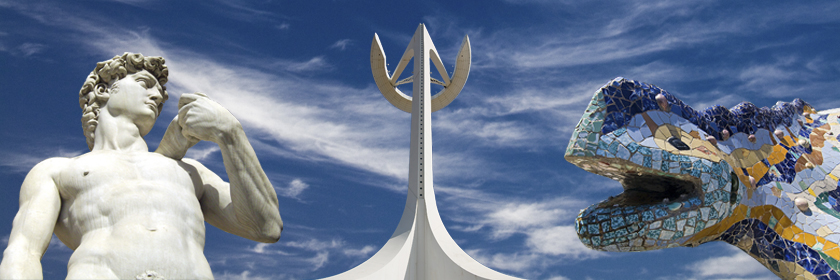

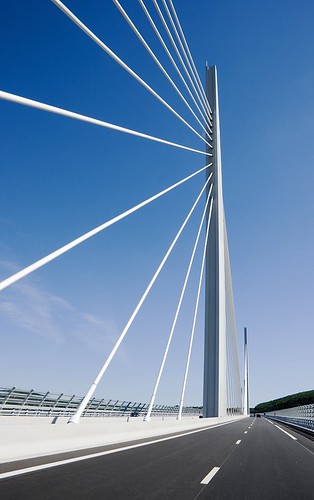
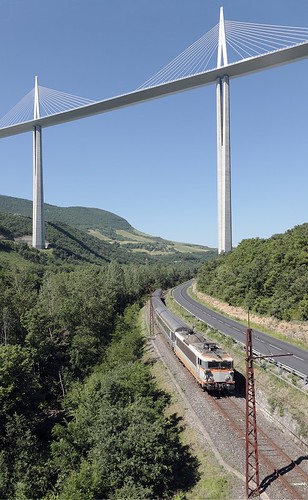




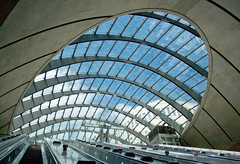




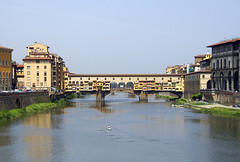




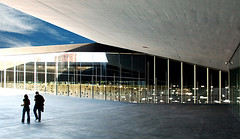



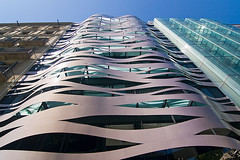



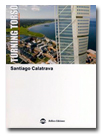

No hay comentarios:
Publicar un comentario